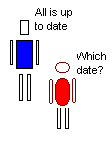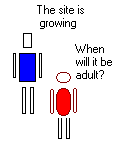In update 66 of June 2021SegRegA was given a power
function in addition to the S-curve, quadratic and
cubic regressions, generalized by a transformation
of the X-data to obtain a better fit. Further the
user interface on the input sheet was updated.
The problem with the Gompertz distribution in the
CumFreq and
CumFreqA programs for
probability distribution fitting
when data <1 occur has been solved. Also, the
Erlang (Gamma) and Rayleigh distributions were
added.
Two new pages on S-curve
and Cubic regressions
have been entered.
The modernized SaltMod version
SaltModM for
agro-hydro-soil-salinity modeling has been given
the option to perform calculations year by year for
manual and annual input changes.
On 22 June 2021 a new additional version has been
made, called SaltModMY, with the possibility to
include in the input menu the irrigation, rainfall,
runoff, surface drainage and agricultural data for
all years over which the model is instructed to run.
It can be made available on request, but it can
also be downloaded from
this address.
This version will definitely not require manual
input changes each year
On 23 July 2021 the
CumFreq and CumFreqA
models for probability distribution fitting were
given scientific instead of standard notations
for the distribution parameters.
On 9 August 2021 the
LeachMod model
for leaching and desalination of soils was
extended with options for rice cropping,
surface drainage and optimization of the depth
of the watertable in the software LeachModE.
Download from the
leachmod page.
On 13 Agust 2021,the RainOff, RainOffQ and
RainOffT programs
(see this page)
were given the posibility to input a variable
instead of a constant escape (evaporation) rate.
In update 65 of 17 March 2019,the modernized
SaltMod program for the
agro-hydro-soil-salinity model, called SaltModM,
was extended with the possibility to vary the
different climatic data from year to year by
entering them in the input file.
On 14 April my list of
publications was
updated.
On 27 April the
SaltCalc software was
streamlined.
On 8 August an article on the versatility of the
generalized logistic
probability distribution was added together with
the use of the CumFreq
program.
On 29 September, the
PolySalt program,
a simplied version of the spatial (polygonal)
hydro-agro-soil-salinity model
SahysMod,
but using smaller time steps, has been given
the same polygonal mapping facilities as
SahysMod. An article on these facilities can be found with this link
In update 64 of 17 July 2018,
An amplified
SahysMod model,
was developed providing mapping options of output
data like soil salinity and watertable depth etc.
In addition it has increased the number of crop
rotation possibilities.
Also, it automatically creates annual input
files when the calculations are done year by
year with intermediate input changes.
On 21 August the amplified
SegReg model, SegRegA,
was given the option to apply a cubic regression
based on matrices, determinants and matrix
inversion. It often yields an S-curve.
On 28 August the
CumFreq program for
probability distribution fitting was enriched
with the Kumaraswamy distribution.
On the same day the
cubic regression page
was added.
On 5 December the
RainOff program for the
simulation of runoff from rainfall was given
two sisters: RainOffT and RainOffQ. The first
uses a numerical optimization method to detect the
linear reservoir function, while the second does
the same for a quadratic function.
In update 63 of 15 January 2018,
thanks to suggestions made by Sue Guo,
the spatial agro-hydro-salnity model
SahysMod was given
additional facilities for annual calculations
whereby the annual input files are automatically
created and opened.
On 19 January the same facilities were provided to
the modernized SaltMod
model that already included an enlarged number of
crop rotation types.
On 20 January a new page
was added to illustrate the use of the amplified
segmented regression model
SegRegA to fit S-curves
(sigmoids) to the data on crop yield and growth
factors like soil salinity and depth of watertable.
On 23 January a new paper on the comparison between
drain and well spacings resp. for horizontal en
vertical drainage was added as a
spacings paper
On 8 February the RainOff
model for rainfall-runoff relations using a
non-linear reservoir was given a conterpart,
RainOffT, that uses a trial and error procedure
to find the reservoir function instead of
determining it from periods with zero rainfall
On 17 February, thanks to a suggestion by Madhu
Kandampadath, the CumFreq
program for probability distribution fitting was
given an extension putting the generalized extreme
value (GEV) distribution on the list of options.
Two days later the composite Laplace distribution
was added
On 22 March the Cumfreq program was given the
option to view a list of probability
distributions ranked according to their
goodness of fit.
On 25 March an
additional page
was added to illustrate the use of the amplified
CumFreq model (CumFreqA) for the fitting of
composite probability distributions to a
data set
On 6 April 2018, the probability density function
(PDF) was included in the histogram of the
CumFreq and CumFreqA programs.
On 27 May 2018, thanks to observations of
John Haddy, the Burr and Dagum (Burr mirrored)
distributions were included. Three days later
the Gompertz distribution was incorporated.
In update 62 of 17 August 2017crop sensitivity to shallow
watertables with examples for different crops in
different countries. All examples result from
measurements in farmers' fields.
A new piece of software was introduced by the name of
NashMod. It is a computer
program for the calculation of streamflow resulting
from rainfall in a watershed or catchment area.
Contrary to RainOff, which
uses the concept of a non-linear reservoir, NashMod
employs a cascade of linear reservoirs, a concept
elaborated by Nash. Simultaneously, the Rainoff model
was udated to improve the pasting of data copied
from a spreadsheet like Excel to the table on the
input tabsheet.On 25 September a new
pdf text was
entered dealing with the appliacation of the
SaltMod model in Egypt.
On 9 October the
PartReg regression program to
detect the longest horizontal trendline, aiming at
defining tolerance levels, was given a confidence
interval for the this level.
On 30 November the spatial agro-hydro-salinity model
SahysMod was given the
facility to create polygonal maps of all output data.
On 3 January 2018 the rainfall-runoff model
RainOff was made more
versatile by dividing the discharge range into a high
and a low section.
In update 61 on 11 April 2017 examples of crop
tolerance to soil salinity measured in irrigated farm
lands were added in the new
tolerance page.
On 21 April new pdf files were uploaded
with data on salt tolerance of crops determined in
farmers'fields in
Egypt and
Pakistan.
On 26 April the
CumFreq
program for probability distribution fitting was
adjusted to deal with zero data values, thanks to a
suggestion by Ivor Growns.
On 16 May the application for
partial regression was given
an F-test and additional graphics options.
On 10 July the rainfall-runoff
simulation model was given
a calculator for the computation of the reaction or
response factor (reservoir function) of agricultural
subsurface drainage systems with pipes or ditches.
|
Select
category :
Software
& models
Articles
& manuals
Reports
case studies
FAQ's
& papers
Home
page
|

